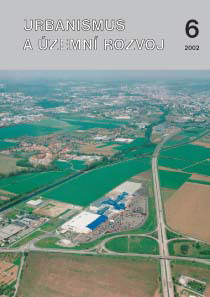
The City of Brno and the Consequences of Varied Forms of Urbanization, by Ondřej Mulíček & Ida Olšová
Second largest city of the Czech Republic, Brno's population is almost 400,000. The core of the urban area, located in the basins of the streams of Svratka and Svitava, predetermines the city's spatial framework in its north−south axis. The area within the administrative borders is of 23,000 hectares, making a population density of 1,635 per km2. Despite a certain loss of influence after World War II (abandonment of the system of Lands) and a rather peripheral location after the split of Czechoslovakia, Brno remains an important metropolis, featuring super−regional functions. The city is a strong commuting centre for jobs, services, and social life. Especially the labour offer and the retail infrastructure go beyond the confines of the agglomeration. Also, the super−regional level is reached in the offer of education, especially for higher educational institutions. The agglomeration is roughly defined as reaching the outer border of the Brno−Land District. Spatial expansion, characterized by residential and commercial suburbanization, is a distinctive aspect of the current development.
Urban Sprawl, by Jiřina Jackson
This article is a modification of Sprawl Evangelia, a paper given at The Face of our Country, a conference held in October last year. Notably, the speaker concluded her paper with a warning: "During those five years, starting from its very outset, sprawl 'progressed' substantially. During the oncoming four years, before any suitable anti−sprawl instrument is approved to, sprawl will not just stand by: more green meadows will be devoured, more investments lost, more brownfields will emerge, and more zones will depopulate."
Suburbanization, Walking, and the Landscape; the Example of Brno, by Josef Markvart
The suburbanization in its uncontrolled form, also called urban sprawl, is undoubtedly a negative phenomenon. In spite of that, suburbanization seems to be logical, corresponding to the development of mobility, communication technologies, and the territorial policy. The objective of physical planning is not to obstruct suburbanization but efficiently regulate, devise, and direct it, so as not to do damage but enhance its specific benefits.
The Regulation Plan of the Central Zone of Krnov: Approaching the Users, by Iveta Laštůvková
The article describes the assignment of the central zone regulation plan of the town of Krnov: the basic requirements for the form and contents of the plan were contemplated in view of its final users. Also, the public discussion over the concept of the plan is commented on, methods of arousing the inhabitants' concern in the document are mentioned, and the result is evaluated. On top of that, varied requirements for the form of physical planning documentation are cited, including opinions on the employment of such documentation in the GIS. The article is concluded with a general reflection on the physical planning process, from the viewpoints of the everyday procedural work with the documentation and its practical implementation.